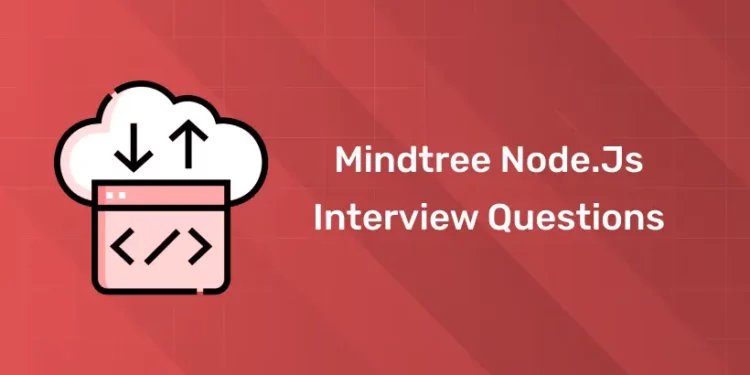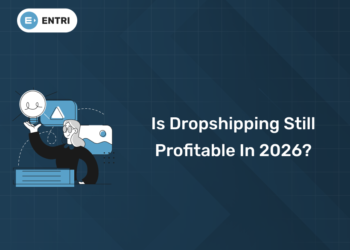Table of Contents
In today’s competitive tech landscape, mastering backend development frameworks like Node.js is essential for standing out in job interviews, especially with top-tier companies like Mindtree. As Node.js continues to power fast, scalable network applications, companies rely on developers who can efficiently work with its non-blocking, event-driven architecture.
Whether you’re a seasoned Node.js developer or just starting your journey, preparing for a Mindtree interview requires a clear understanding of both core concepts and advanced techniques. This blog is designed to give you a deep dive into the most commonly asked Mindtree Node.js interview questions, covering everything from asynchronous programming to performance optimization.
Learn Full Stack Development with expert mentors! Get Free Demo Here!
Introduction
Mindtree is a global technology consulting and services company known for its expertise in delivering digital transformation and IT solutions. Founded in 1999, Mindtree has grown to become a prominent player in the technology industry, serving clients across various sectors, including retail, banking, healthcare, and more. With a focus on innovation, Mindtree helps organizations enhance their business operations through advanced digital solutions such as cloud computing, data analytics, artificial intelligence, and IoT.
The company is renowned for its strong culture of learning and employee development, making it an attractive workplace for tech professionals. As part of the Larsen & Toubro (L&T) group, Mindtree combines its agile approach with L&T’s deep industry expertise, offering a unique blend of creativity and technical excellence. Aspiring developers looking to join Mindtree can expect exciting opportunities to work on cutting-edge technologies, including Node.js, and contribute to impactful global projects.
Why Join in Mindtree?
Joining Mindtree offers tech professionals an incredible opportunity to grow and thrive in a dynamic, innovation-driven environment. Here’s why Mindtree stands out as a great career choice:
1. Cutting-Edge Projects
Mindtree partners with global enterprises to deliver digital transformation solutions. As an employee, you’ll work on cutting-edge technologies like AI, IoT, blockchain, cloud, and Node.js, gaining exposure to projects that have a real-world impact.
2. Career Development and Learning Opportunities
Mindtree emphasizes continuous learning, offering a wide range of training programs, certifications, and mentorship opportunities. Whether you’re a beginner or an experienced professional, the company supports your growth at every stage of your career.
3. Innovative and Agile Culture
Mindtree fosters an open, collaborative, and innovative workplace. You’ll be part of a community that values creativity, encourages problem-solving, and promotes innovation through agile methodologies and best practices.
4. Employee-Centric Policies
Mindtree takes pride in its employee-first approach. With flexible working conditions, wellness programs, and a strong emphasis on work-life balance, Mindtree ensures that its workforce remains engaged, happy, and productive.
5. Global Exposure
As a Mindtree Mind, you’ll work with clients from across the globe, broadening your horizons and enhancing your ability to adapt to diverse environments. The international exposure offers a wealth of learning and professional growth opportunities.
6. Strong Ethical Values
Mindtree is committed to ethical business practices, sustainability, and diversity. It creates an inclusive work environment where employees from all backgrounds are treated equally and given opportunities to thrive.
7. Recognition and Growth Opportunities
Mindtree recognizes and rewards high performance. The company offers fast-tracked growth opportunities for those who excel in their roles, giving you a clear pathway to success and leadership positions.
Mindtree Interview Preparation Tips for Node.js
Preparing for a Node.js interview at Mindtree requires a solid understanding of both the fundamentals and advanced concepts. Here are some effective tips to help you ace your Node.js interview at Mindtree:
1. Master Core Node.js Concepts
Start by brushing up on essential Node.js concepts like its single-threaded, non-blocking architecture, event loop, asynchronous programming, callbacks, and promises. Be prepared to explain how these work and why they are beneficial in building scalable applications.
2. Understand Asynchronous Programming
Node.js heavily relies on asynchronous programming, so you should be familiar with handling async operations using callbacks, promises, async/await, and error-handling patterns. Interviewers often ask about callback hell and ways to avoid it, so understand techniques like chaining promises or using async/await to simplify asynchronous code.
3. Work on Hands-On Coding Skills
Mindtree often includes live coding challenges, so practice solving coding problems using Node.js. Work on key areas like working with streams, file handling, and implementing basic RESTful APIs. Practice building CRUD applications, as these showcase your ability to handle real-world problems.
4. Focus on Middleware and Express.js
Express.js is one of the most popular Node.js frameworks, so be sure to understand its fundamentals. Be ready to answer questions about routing, middleware, error handling, and creating REST APIs with Express. Know how middleware functions work and how to structure your Express applications efficiently.
5. Understand Node.js Module System
Know how Node.js modules work, including the difference between CommonJS and ES6 modules, how to import/export modules, and how to structure your Node.js projects using these modules effectively. This is often a key area of focus in technical interviews.
6. Get Familiar with Package Management
Be knowledgeable about npm (Node Package Manager) and how to manage dependencies, install modules, create package.json files, and deal with versioning. You may also be asked about security concerns related to third-party packages and how to handle them.
7. Focus on Performance Optimization
Node.js is widely used for scalable, high-performance applications. Be prepared to discuss performance optimization techniques like using clusters, load balancing, managing memory leaks, caching, and optimizing database queries. Understand how to debug and profile Node.js applications to identify performance bottlenecks.
8. Practice Problem-Solving with Data Structures and Algorithms
Like most technical interviews, Mindtree will likely assess your understanding of data structures and algorithms. Practice coding problems involving arrays, linked lists, trees, sorting algorithms, and hash tables using JavaScript, as it’s directly applicable in Node.js environments.
9. Understand Event-Driven Architecture
Since Node.js follows an event-driven architecture, be ready to explain how events work, the role of the event emitter, and how Node.js handles concurrency through its event-driven, non-blocking I/O model.
10. Prepare for System Design Questions
Depending on the role, you may face system design questions where you’ll need to design a scalable, high-performance application using Node.js. Understand basic architectural patterns, microservices, database design, and scaling strategies. Be prepared to explain your thought process and reasoning.
11. Review Commonly Used Libraries and Frameworks
Mindtree interviewers may ask about popular libraries and frameworks used alongside Node.js, such as Express.js, Socket.io, Sequelize (for databases), and Mongoose (for MongoDB). Know how to integrate and use them in real-world applications.
12. Prepare for Behavioral and Problem-Solving Questions
Beyond technical skills, Mindtree also evaluates problem-solving approaches and teamwork in interviews. Be ready to share examples of how you’ve tackled challenges, worked in teams, or resolved conflicts in previous projects.
Learn Full Stack Development with expert mentors! Get Free Demo Here!
Top Mindtree Node.js Interview Questions and Answers
Here are the top 35 Mindtree Node.js interview questions and answers:
1. What is Node.js?
Answer: Node.js is an open-source, cross-platform runtime environment for developing server-side applications. It is built on Chrome’s V8 JavaScript engine, enabling JavaScript to be run outside the browser.
2. What is the difference between Node.js and JavaScript?
Answer: JavaScript is a programming language, while Node.js is a runtime environment that allows executing JavaScript outside of the browser, typically for server-side scripting.
3. Explain the event-driven architecture of Node.js.
Answer: Node.js follows an event-driven architecture where events are emitted, and listeners respond to those events. This helps handle concurrent operations efficiently, making Node.js non-blocking and asynchronous.
4. What is the use of require() in Node.js?
Answer: require() is used to import external modules, libraries, or files in Node.js applications.
5. What is a callback function in Node.js?
Answer: A callback is a function passed into another function as an argument. It is executed after the completion of the asynchronous operation.
6. What is the difference between blocking and non-blocking code?
Answer: Blocking code waits for an operation to complete before executing the next line, while non-blocking code allows the program to continue executing without waiting for an operation to complete.
7. Explain what the package manager npm is.
Answer: npm (Node Package Manager) is the default package manager for Node.js. It helps in installing, updating, and managing dependencies in a Node.js project.
8. How can you create a simple HTTP server in Node.js?
Answer:
const http = require('http');
const server = http.createServer((req, res) => {
res.writeHead(200, { 'Content-Type': 'text/plain' });
res.end('Hello, World!\n');
});
server.listen(3000);
console.log('Server running at http://localhost:3000/');
9. What are streams in Node.js?
Answer: Streams are objects used to read data from a source or write data to a destination in a continuous manner. Streams are useful for processing large files or real-time data.
10. What are the types of streams in Node.js?
Answer: The four types of streams in Node.js are:
- Readable
- Writable
- Duplex (both readable and writable)
- Transform (applies a transformation while reading and writing)
11. What is middleware in Express.js?
Answer: Middleware functions in Express.js are functions that have access to the request object, response object, and the next middleware function in the request-response cycle.
12. What is the difference between readFile and createReadStream?
Answer: readFile reads the entire file into memory before returning it, while createReadStream reads the file in chunks, making it more memory efficient for large files.
13. How do you handle errors in Node.js?
Answer: Errors in Node.js can be handled using try-catch blocks, using error events in event emitters, or passing errors to callback functions as the first argument (error-first callback pattern).
14. What is the process object in Node.js?
Answer: The process object provides information about the current Node.js process. It can be used to access environment variables, handle signals, or manage process exits.
15. Explain the concept of clustering in Node.js.
Answer: Clustering in Node.js allows you to create child processes (workers) that share the same server port, making it possible to handle multiple requests concurrently on multi-core systems.
16. What are Buffers in Node.js?
Answer: Buffers are used to handle binary data directly in Node.js. They are especially useful when dealing with streams and file systems.
17. What is async/await in Node.js?
Answer: async/await is syntax in JavaScript that makes it easier to write promises. async makes a function return a Promise, while await pauses the execution until the Promise is resolved.
18. What is the role of the EventEmitter in Node.js?
Answer: The EventEmitter class in Node.js is used to handle events in an event-driven manner. It allows for emitting and handling custom events in a program.
19. What is the difference between setTimeout and setImmediate in Node.js?
Answer: setTimeout schedules a function to be executed after a specified delay, while setImmediate executes the function as soon as the current event loop cycle completes.
20. What is a REPL in Node.js?
Answer: REPL stands for Read-Eval-Print Loop. It is a simple interactive shell that processes Node.js commands, evaluates them, and prints the results.
21. What is the role of the V8 engine in Node.js?
Answer: The V8 engine is the JavaScript engine that executes JavaScript code in Node.js. It compiles JavaScript code into machine code for fast execution.
22. How do you handle file uploads in Node.js?
Answer: File uploads can be handled using middleware such as multer in Express.js, which parses multipart/form-data requests.
23. Explain how to use Promises in Node.js.
Answer: Promises in Node.js are objects representing the eventual completion (or failure) of an asynchronous operation. You can use .then() for success and .catch() for error handling.
24. What is crypto in Node.js?
Answer: crypto is a module in Node.js that provides cryptographic functionalities, such as hashing, encryption, and decryption.
25. How can you secure a Node.js application?
Answer: Securing a Node.js application involves using HTTPS, securing environment variables, sanitizing user input, and managing authentication and authorization properly.
26. What is CORS and how do you handle it in Node.js?
Answer: CORS (Cross-Origin Resource Sharing) is a mechanism that allows restricted resources on a web page to be requested from another domain. In Node.js, it can be handled using the cors middleware.
27. What is the difference between fork() and spawn() methods in Node.js?
Answer: fork() is used to create a new child process with IPC (Inter-Process Communication) capabilities, while spawn() is used to launch a new process without IPC.
28. Explain the use of the cluster module in Node.js.
Answer: The cluster module allows creating child processes (workers) that share the same server port, enabling load balancing across multiple CPU cores.
29. What are environment variables in Node.js?
Answer: Environment variables are key-value pairs used to configure the environment in which a Node.js application runs, such as setting the port number or database credentials.
30. What is the use of path module in Node.js?
Answer: The path module provides utilities for working with file and directory paths, such as resolving absolute paths, joining paths, or extracting file extensions.
31. What is the role of Express.js in Node.js?
Answer: Express.js is a lightweight, unopinionated framework for building web applications and APIs in Node.js. It simplifies routing, middleware integration, and handling HTTP requests.
32. How do you implement routing in Express.js?
Answer:
const express = require('express');
const app = express();app.post(‘/submit’, (req, res) => res.send(‘Form submitted’));
33. How can you connect a Node.js application to a database?
Answer: You can connect a Node.js application to a database using libraries like mongoose for MongoDB or pg for PostgreSQL, or mysql for MySQL databases.
34. What is JWT and how is it used in Node.js?
Answer: JWT (JSON Web Token) is a secure way of transmitting information between the server and client. It is commonly used for authentication in web applications.
35. What are best practices for logging in Node.js?
Answer: Best practices include using libraries like winston or morgan, logging relevant information (like errors, requests, responses), and storing logs in external systems for monitoring.
Learn Full Stack Development with expert mentors! Get Free Demo Here!
Mindtree Node.js Technical Interview Questions and Answers
1: Which of the following is a JavaScript framework/library?
Here are some Mindtree Node.js technical interview coding questions and sample answers:
1. How do you handle asynchronous code in Node.js?
Answer: Asynchronous code in Node.js can be handled using callbacks, Promises, and async/await. For example:
2. How do you implement a simple HTTP server in Node.js?
Answer: You can use the built-in http module to create an HTTP server.
3. How would you use Express.js to create a RESTful API?
Answer:
4. How can you optimize a Node.js application for performance?
Answer: Some techniques to optimize performance in Node.js include:
- Use clustering to take advantage of multi-core systems.
- Use streams to process large files or data sets efficiently.
- Enable Gzip compression for HTTP responses.
- Use caching to reduce redundant database queries.
- Avoid synchronous code to prevent blocking the event loop.
5. How would you handle error management in a Node.js application?
Answer: Error handling can be done using try-catch blocks for synchronous code and promise rejection handling for asynchronous code. Middleware in Express.js can also be used for centralized error handling.
6. How do you use process.nextTick() and when should you use it?
Answer: process.nextTick() defers the execution of a function until the next iteration of the event loop. It is useful when you want to allow the current function to complete before executing another piece of code.
7. What is the difference between readFile and createReadStream in Node.js?
Answer: readFile reads the entire file into memory before making it available, which can be inefficient for large files. createReadStream, on the other hand, reads the file in chunks, making it more efficient for large files as it uses streams.











